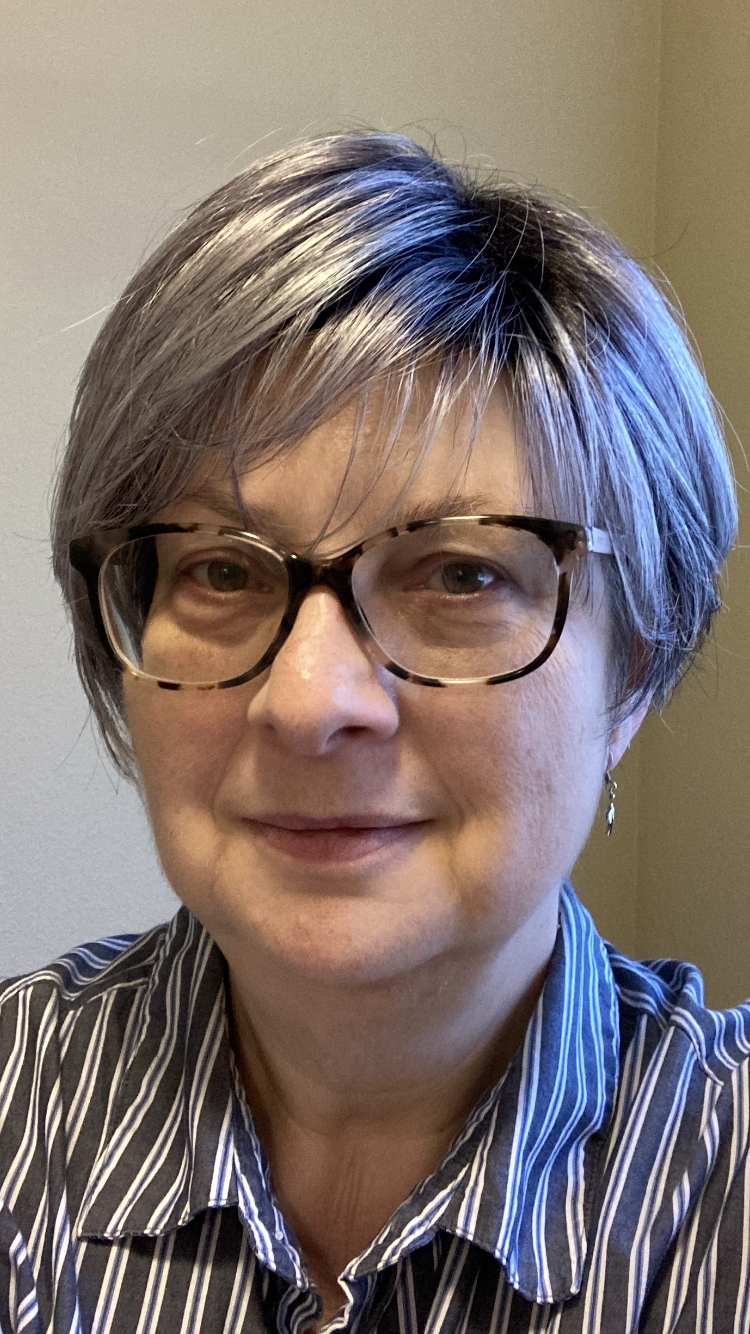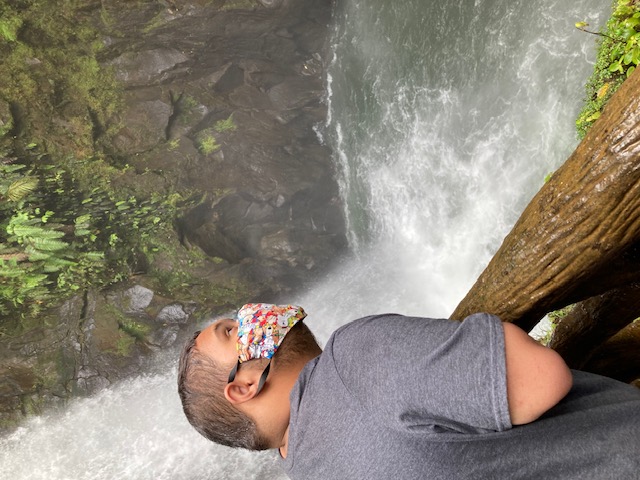About Me

My name is Lynne Mason, and I have been a DSP in Salem, Oregon since 2021, and am also the parent and legal guardian of a 20 year old young man with Down Syndrome named G who is nonspeaking. We have been using Proloquo2go together since 2013, when he got his first loaner iPad from school at 9 years old.
G had leukemia at 3, and was in treatment for 9 months in and out of the hospital and the Ronald McDonald House. The treatment was successful, but it also came with psychological trauma that left him unable to speak or otherwise communicate, and made him very resistant to doctor’s visits and routine medical care. It was always a fight. G would scream, kick, wiggle, hit, and anything else he could do to avoid engaging with the medical team.
One day, the school SLP (Speech Language Pathologist) loaded a few medical phrases onto his loaner iPad for me to take to G’s next routine doctor’s visit:
- “Will you stand on the scale?”
- “Can I take your temperature?”
- “Can I take your blood pressure?”
- “Can I listen to your heart?”
- “Can I look in your ears/mouth?”
Along with responses for him to choose from:
- “Yes”
- “No”
- “Wait a minute”
She then made a social story with Pictello about going to the doctor’s office so that we could watch it together beforehand and he would know what to expect. I was shocked when G actually wanted to watch it with me!
Now, in my mind, I had questions…
“Why are we asking for his PERMISSION to do all these things when he doesn’t have a choice, they HAVE to get his blood pressure/temperature etc.?”
“Does he even understand the questions? He doesn’t look like he’s even listening.”
“What if he just says NO?? And doesn’t budge? Why would he EVER say yes to, say, looking in his ears with that little pointy flashlight, or squeezing his arm with the blood pressure cuff?”
...but I decided to try it anyway. I mean, I had tried everything else, so why not?
...but gave it a try!
So, the next time we went to the doctor’s office, we gave it a try. His nurse practitioner was up for it; and both she and her assistant were incredibly patient. She pushed the buttons herself on the device that asked the questions. He responded “yes”. Only after she got permission, would she go ahead.
Yes to the blood pressure cuff. (We had never been able to get his blood pressure before.)
Yes to the thermometer on his forehead. Yes to listening to his heart.
He wasn’t so cooperative with the looking in his ears, even after permission was granted. I said, “maybe you mean no,” and pushed the button for no. He didn’t respond.
“It’s okay to say no,” we told him. “It’s okay to say wait a minute.”
He pushed the button for “wait a minute”.
After a few moments of chatting, the assistant tried G again. “Can I look in your ears?”
“Yes,” he replied with the device, and this time, he let her look.
I couldn’t wait to tell the SLP what had happened! I think I was emailing her on my phone before we even left the clinic.
From this I learned that a person can’t really say “yes” to something if they don’t have any way to say “no”. Consent requires real choice.
And surprisingly, that he didn’t have to be proficient or proactive with AAC himself before the technology could be used to offer meaningful choices and gain consent.
The freedom that followed that beginning

G has made a LOT of choices over the years since that hopeful beginning. Here are a few of them, and the opportunities that followed, off the top of my head:
- He’s been vaccinated several times, with full consent.
- He’s had his nose swabbed for COVID testing.
- He’s had his blood drawn for labs.
- He’s had a thorough eye exam, with dilating eyedrops (that took some explaining and some patience, but I’m happy to say that was done with his full consent, too).
- He has gotten on an airplane, and through airport security, for an international flight.
- He’s had changes of plans in international airports (flights canceled) while he was hungry and tired of standing in line. We could use AAC to discuss when food and rest would happen and what to expect.
- He’s had a big bat fly SMACK into his bedroom window late at night, and been (lightly) mobbed by white-faced capuchins in a river boat in Costa Rica. Both times we used AAC to talk about it and consolidate it into a memory.
- He saw huge waterfalls on his trip to Costa Rica that left him stunned and reverent. He used AAC to talk about it to a friend back home via video chat.
When I say that the support of a DSP with AAC can open up the whole world for non speaking individuals, I mean it literally!
All of those things would have been impossible to navigate, and impossible for G to experience, without the solid communication that had been built over time between him and his DSP, facilitated by AAC.
You can do it, too.
This website is dedicated to helping those who do not speak, like G, to live more empowered lives by training their support professionals in the use of AAC to support choice making, accountability and consent, and building community connections.
Welcome!